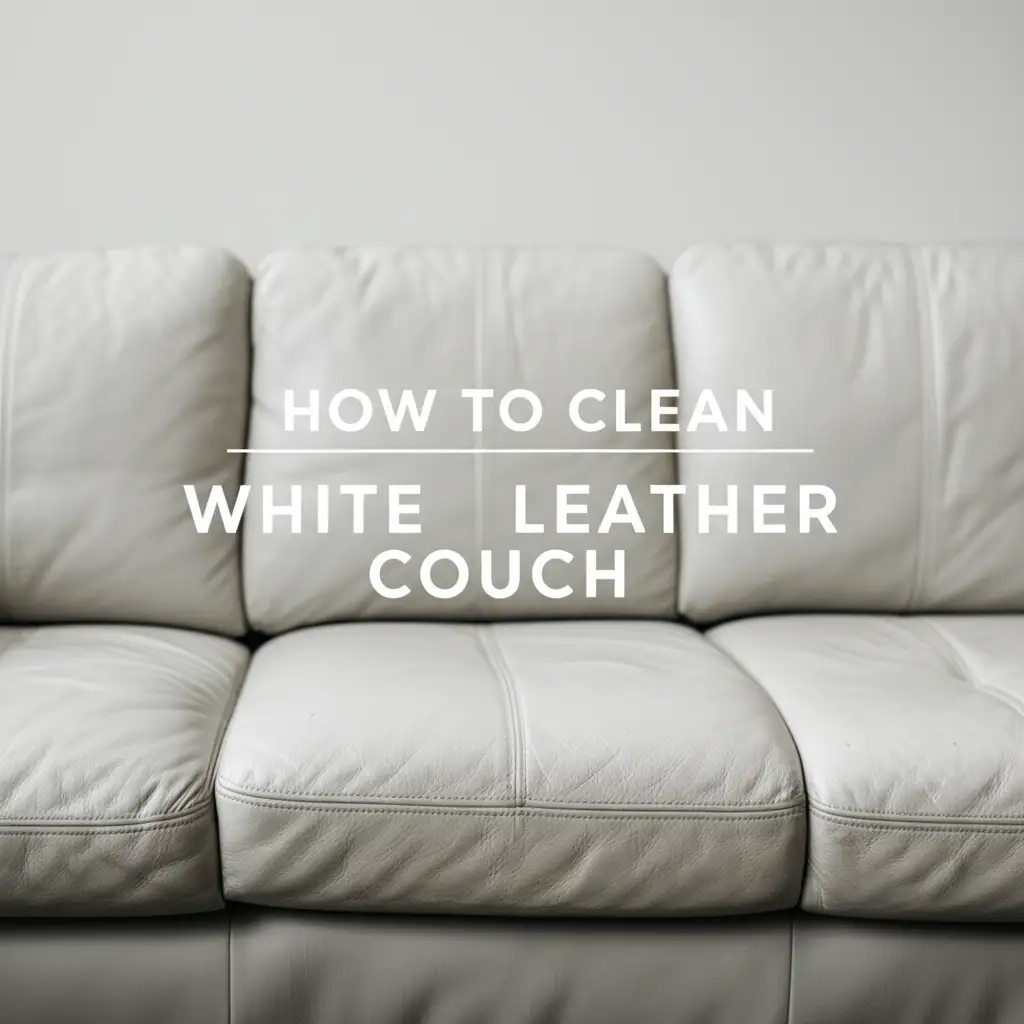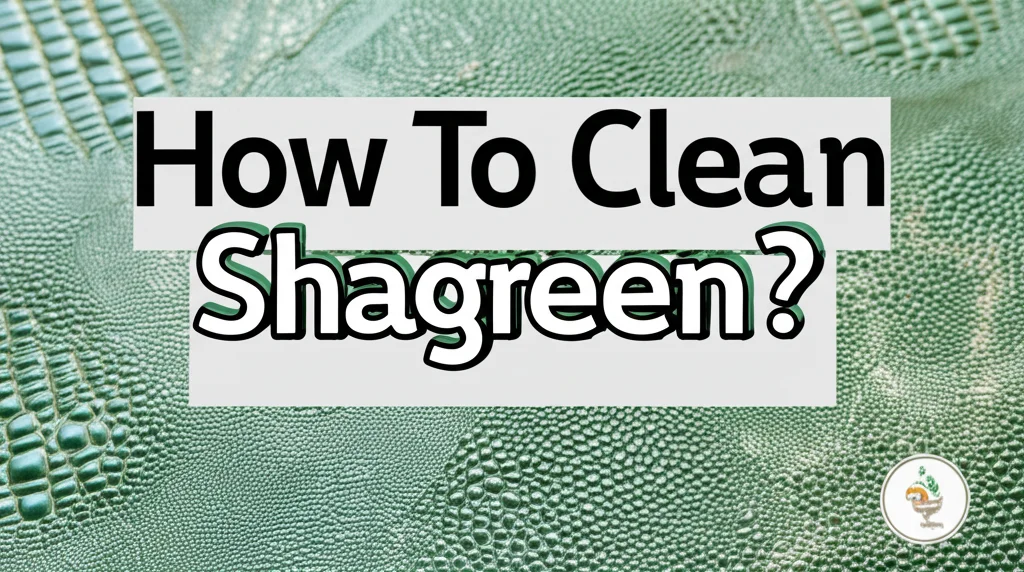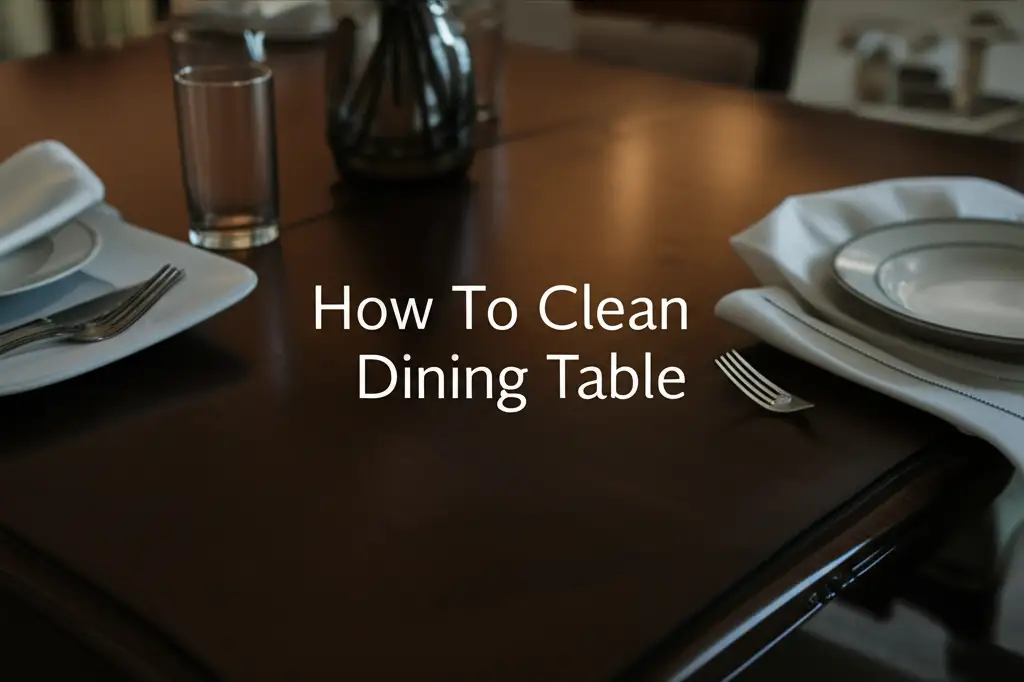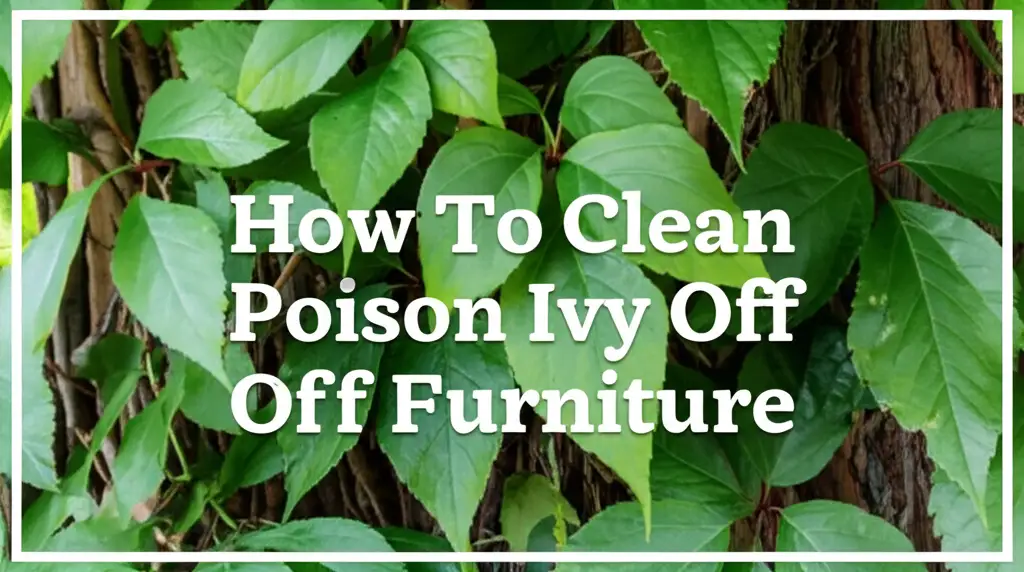· Home Cleaning · 22 min read
How To Clean White Leather Couch

How To Clean White Leather Couch
Restore Brilliance: How To Clean Your White Leather Couch
Owning a white leather couch brings elegance and brightness to any room. However, its light color also means dirt and stains show easily. Maintaining its pristine appearance can feel like a big challenge. I know this struggle firsthand, as my own white leather sofa often looks like a magnet for spills. Keeping it clean requires consistent care and the right cleaning methods.
You want your couch to look new. Knowing the best ways to clean white leather helps. This guide shares proven techniques. You will learn about daily care, how to remove common stains, and how to keep your leather soft. We will cover everything from simple dusting to tackling tough marks. You will gain the skills to keep your white leather couch looking beautiful for years. Let’s make your white leather shine again.
Takeaway
- Identify your leather type before cleaning.
- Dust and wipe your white leather couch regularly.
- Address spills immediately to prevent stains.
- Use mild, approved cleaning solutions.
- Condition leather after cleaning to maintain softness.
- Avoid harsh chemicals and abrasive tools.
Cleaning a white leather couch involves knowing its specific leather type, performing regular light dusting and wiping, and quickly treating spills with gentle, approved cleaning solutions followed by conditioning to keep the leather supple and protect its surface.
Understanding Your White Leather Couch
White leather couches add a touch of luxury. They also highlight every speck of dirt. Different types of leather exist. Each type needs specific care. Knowing your leather helps you clean it right.
Types of Leather on Couches
Not all leather is the same. Most white leather couches use protected or aniline leather. Protected leather has a coating. This coating resists stains. It is easier to clean. Aniline leather has no coating. It feels softer. It absorbs spills quickly. This makes it harder to clean. Check your couch’s tag. It usually tells you the leather type. If you do not know, test cleaning solutions in a hidden spot.
Protected leather usually means pigmented or semi-aniline. Pigmented leather is the most durable. It has a heavy surface coating. This coating contains pigments. It resists fading and stains. Semi-aniline leather has a lighter coating. It offers more protection than aniline. It still feels soft. Aniline leather shows natural markings. It breathes well. It also stains very easily. It absorbs liquids like a sponge. Always be careful when cleaning this type.
Why White Leather Shows Dirt More
White is a neutral color. It reflects light. This makes dirt, dust, and stains very visible. Darker colors hide small marks. White amplifies them. Oils from skin can also darken white leather over time. Even denim dye can rub off onto it. Regular cleaning prevents these issues. Think of it as a blank canvas. Any mark stands out. This is why quick action is so important.
Preventative measures also help. Keep pets off the couch. Ask people to avoid sitting on it with new denim. Use throws in high-traffic areas. These steps reduce the dirt your white leather shows. I always keep a soft cloth nearby for quick wipes. This keeps my couch looking fresh. Regular attention pays off. It saves you from bigger cleaning jobs later.
Essential Tools and Cleaning Solutions
Cleaning your white leather couch needs the right supplies. Using the wrong products can damage the leather. Always gather your tools before you start. This makes the cleaning process smooth. I learned this the hard way once. I started cleaning, then realized I missed a key item. It meant extra trips.
Basic Cleaning Supplies
You will need a few simple items. These include soft microfiber cloths. Microfiber is gentle and absorbent. You also need a vacuum cleaner with a soft brush attachment. This helps remove loose dirt. A small bucket or two for water is also essential. Distilled water is best. Tap water can leave mineral spots, especially on white surfaces.
Gather a soft-bristled brush. This helps for gentle scrubbing on textured leather. You might also want cotton swabs for small spots. Keep a spray bottle handy for mixing solutions. I always make sure my cloths are clean before I start. Dirty cloths can spread grime. Fresh tools make a big difference.
Choosing the Right Cleaning Solutions
Your white leather couch needs gentle cleaners. Harsh chemicals can dry out or crack the leather. They can also strip its protective coating. For general cleaning, a mild soap solution often works best. You can mix a few drops of mild liquid dish soap with warm distilled water. Test this solution in a hidden spot first. Always wait for it to dry completely. Look for any discoloration or damage.
Specialized leather cleaners are also an option. Many brands make specific cleaners for white leather. Look for products that are pH-neutral. Avoid anything with ammonia or bleach. These chemicals are too strong for leather. They can cause permanent damage. A good leather cleaner will clean without harming the material. I prefer gentle options. They protect my couch’s finish. Remember, prevention is key. You can clean dirt off your white couch more easily with the right tools.
Natural Cleaning Alternatives
You can also use natural cleaning agents. White vinegar is a popular choice for many stains. Mix equal parts white vinegar and distilled water. This solution helps remove mild stains and odors. Baking soda is another useful natural cleaner. It absorbs odors and can help lift light stains. You can sprinkle it on the couch. Let it sit for a few hours. Then vacuum it up. For deep cleaning and odor absorption, cleaning a couch with baking soda can be very effective.
Olive oil can act as a natural conditioner. Mix a small amount with white vinegar for a homemade polish. Remember to use very little oil. Too much can make the leather greasy. Always test natural solutions first. Even natural ingredients can react differently with various leather types. I once used too much oil. It left a temporary dark spot. Small amounts are best.
Step-by-Step Daily Cleaning and Dusting
Regular care keeps your white leather couch looking great. It prevents dirt from building up. Daily cleaning is simple. It saves you from deep cleaning later. I make this part of my routine. It only takes a few minutes.
Vacuuming Loose Debris
Start by vacuuming your couch. Use a soft brush attachment. This removes crumbs, dust, and pet hair. Pay attention to crevices. Dirt collects there easily. Vacuum all surfaces gently. This step prepares the couch for wiping. It stops you from rubbing dirt into the leather. I find that a quick vacuum makes the next steps much easier.
Do not press too hard. Hard pressure can scratch the leather. Move the attachment smoothly over the surface. Lift cushions if they are removable. Vacuum underneath them. You will be surprised how much dust gathers there. Regular vacuuming is the foundation of good leather care.
Gentle Wiping for Surface Dirt
Next, wipe the couch. Use a soft, damp microfiber cloth. Dampen it with plain distilled water. Wring the cloth well. It should feel damp, not wet. Wipe down all leather surfaces. Move in small sections. This removes surface dirt and oils. Rinse the cloth often. Make sure it stays clean. A dirty cloth just spreads dirt.
For slightly more stubborn grime, use a mild soap solution. Mix a few drops of gentle liquid dish soap with distilled water. Dip your cloth into the solution. Wring it out very well. Wipe the leather gently. Follow up with a second cloth. This second cloth should only have distilled water. This rinses any soap residue. Finally, dry the area with a clean, dry cloth. Always dry the leather completely. Do not let water sit on it.
Spot Cleaning Minor Marks
Minor marks appear often. Deal with them right away. Use a soft cloth and a small amount of your mild soap solution. Gently blot the mark. Do not rub. Rubbing can spread the mark. It can also damage the leather surface. For tougher spots, a bit of rubbing alcohol on a cotton swab might work. Only use this on tiny, stubborn spots. Test it first.
If you have a fresh spill, blot it immediately. Use a clean, dry cloth. Absorb as much liquid as possible. Then proceed with the gentle wiping method. Quick action makes a big difference. I always keep a clean cloth nearby. This lets me react fast to any spill. Preventing stains is always easier than removing them.
Tackling Common Stains on White Leather
White leather attracts stains. Various spills and marks can appear. Each stain type needs a specific approach. Acting fast is key for success. I once left a coffee spill too long. It was much harder to remove.
Removing Ink Stains
Ink stains are challenging. They need quick action. For fresh ink, use rubbing alcohol. Apply a small amount to a cotton swab. Gently blot the ink. Do not rub. Blot until the ink lifts. Change swabs as they pick up ink. Follow with a damp cloth to wipe the area. Dry it with a clean cloth. For comprehensive guidance on how to remove various ink marks, you can check out this article on how to clean ink off leather. Older ink stains might need a specialized leather ink remover. Always test any product on an hidden spot first.
Some people use hairspray for ink. This can damage leather. Stick to rubbing alcohol or specific leather products. Be patient. Ink can be stubborn. Several light applications are better than one heavy one.
Cleaning Dirt and Grime
Dirt and grime build up over time. Use your mild soap solution for these. Dampen a microfiber cloth. Wipe the dirty area in small circular motions. Do not scrub hard. The goal is to lift the dirt. Rinse your cloth often. Follow with a cloth dampened with plain water. This removes soap residue. Dry the area completely. For general dirt on a white couch, this method works well.
For heavily soiled areas, you might need a leather cleaner. Apply it according to the product directions. Always test it first. Dirt from clothes can transfer. Regular cleaning prevents it from setting deep into the leather. My kids track in dirt daily. A quick wipe helps.
Dealing with Food and Beverage Spills
Food and drink spills are common. Act immediately. Blot up liquid spills with a clean, dry cloth. Do not rub. Rubbing spreads the stain. For solid food, scrape off excess gently with a dull knife or spoon. Then wipe the area with a mild soap solution. Follow with a water-dampened cloth. Dry thoroughly.
Sugary drinks can leave sticky residue. This residue attracts more dirt. Clean these thoroughly. If the stain remains, a leather cleaner might be needed. Sometimes, a paste of baking soda and water can help with greasy food stains. Apply, let dry, then gently brush off.
Addressing Pet and Human Accidents
Accidents happen. Pet urine or human bodily fluids need immediate attention. These stains can leave odors and permanent marks. First, blot up as much liquid as possible with paper towels. Press firmly. Repeat until no more liquid comes up. Then, clean the area. Use a solution of equal parts white vinegar and distilled water. This neutralizes odors. Apply with a damp cloth. Blot, do not rub. For more specific instructions on how to clean pee off a couch or how to clean vomit off couch, consult those dedicated guides.
For deep odors, sprinkle baking soda over the area after cleaning. Let it sit for several hours or overnight. Then vacuum it up. For very stubborn urine on couch cushions, professional cleaning might be necessary. I keep an enzyme cleaner for pet accidents. It helps break down the proteins in urine.
Removing Paint and Sunscreen Stains
Paint stains are tough on leather. For fresh paint, blot it immediately. Use a dry cloth. If it is water-based paint, a damp cloth with mild soap might work. For oil-based paint, you might need mineral spirits. Apply a tiny amount to a cotton swab. Blot the paint gently. Test this first in an unseen area. Follow with a mild soap solution. For a detailed guide on how to clean paint off leather, refer to that resource.
Sunscreen stains leave a greasy, discolored mark. These stains are often made of oils and chemicals. Blot excess sunscreen with a dry cloth. Then, apply a mild degreaser designed for leather. Or, use a solution of mild soap and water. Gently wipe the area. Rinse with a damp cloth. Dry completely. For a comprehensive approach to how to clean sunscreen off leather, refer to the specific article. Be patient. Sunscreen stains can be persistent.
Tackling Yellowing and Discoloration
White leather can yellow over time. This happens due to age, sunlight, or body oils. Start with a thorough cleaning using mild soap and water. If yellowing persists, you might need a specialized product. Some leather restoration kits include agents for brightening white leather. Always follow product instructions carefully. Test in a hidden area. You can find more detailed advice on how to clean white leather that has yellowed in our guide.
Sunlight speeds up yellowing. Try to place your white leather couch away from direct sunlight. Rotating cushions also helps. This ensures even exposure and wear. Regular conditioning can also slow down the yellowing process. I rotate my cushions every few months. It helps keep the color consistent.
Deep Cleaning Your White Leather Couch
Sometimes, a simple wipe is not enough. Your white leather couch needs a deeper clean. This removes built-up grime. It restores its fresh look. Do this every few months or as needed.
When to Deep Clean
You should deep clean your white leather couch when it looks dull. If it feels slightly sticky or has overall discoloration, it is time. Deep cleaning removes accumulated dirt and oils. It is more involved than daily wiping. Plan for this task. It takes more time and effort. I usually deep clean my couch twice a year. It depends on how much it gets used. High traffic areas might need it more often.
Consider deep cleaning after a major spill or party. This helps prevent long-term damage. It also refreshes the leather. A clean couch looks more inviting. It also lasts longer.
Using Commercial Leather Cleaners
Many commercial leather cleaners are available. Choose one specifically for white leather. Read the instructions carefully. Some cleaners are sprays. Others are liquids you apply with a cloth. Always test the product first. Find a hidden spot on your couch. Apply a small amount. Wait for it to dry. Check for any adverse reactions. Look for discoloration or drying.
Once tested, apply the cleaner to a soft cloth. Wipe a small section of the couch. Work in small areas. Do not saturate the leather. Wipe off any excess product. Follow with a clean, damp cloth to remove residue. Then dry the area. Repeat for the entire couch. Commercial cleaners often have specific instructions. Follow them precisely.
Gentle Scrubbing for Embedded Dirt
For dirt embedded in the leather’s grain, gentle scrubbing helps. Use a soft-bristled brush. This could be a soft toothbrush or a dedicated leather brush. Apply your mild cleaning solution to the brush. Gently scrub the dirty areas. Use light, circular motions. The goal is to lift the dirt, not push it deeper. Work slowly and carefully.
After scrubbing, wipe the area. Use a clean, damp microfiber cloth. This removes the lifted dirt and cleaning solution. Follow with a dry cloth. Make sure the leather is completely dry. Do not let water pool. This can damage the leather.
Steam Cleaning with Caution
Steam cleaning for leather is generally not recommended. High heat and moisture can damage leather. They can cause it to shrink, crack, or lose its oils. If you choose to use a steamer, use extreme caution. Always use a low-heat setting. Keep the steamer moving. Do not hold it in one spot. Use a clean, dry cloth to immediately wipe away any moisture.
I do not use a steamer on my leather couch. The risks are too high. For fabric couches, cleaning a couch with a steamer is common. For leather, it is best to avoid it. If you have no other choice, consult a professional leather cleaner first. They can offer specific advice for your couch type.
Conditioning and Protecting Your White Leather
Cleaning is only half the job. Conditioning is just as important. It keeps your white leather soft and flexible. Protection helps repel future stains. This two-part process keeps your couch beautiful for longer.
Importance of Conditioning
Leather is skin. It needs moisture. Cleaning removes natural oils. It also removes moisture. Conditioning puts these back. It prevents the leather from drying out. Dry leather can crack and stiffen. Conditioning keeps it supple. It also maintains its luxurious feel. This is especially true for white leather. It often shows wear more readily.
Regular conditioning extends your couch’s life. It makes the leather more resistant to future damage. Think of it like moisturizing your own skin. It keeps it healthy and resilient. I condition my white leather couch every three to six months. This frequency works well for my home. It keeps the leather soft to the touch.
Choosing a Leather Conditioner
Many types of leather conditioners exist. Look for a conditioner specifically for white or light-colored leather. Some darker conditioners can tint white leather. Choose a pH-neutral product. Avoid conditioners with silicone or wax. These can build up on the surface. They can also attract dirt. A good conditioner will penetrate the leather. It will nourish it from within.
I prefer cream or lotion conditioners. They are easy to apply. Read reviews before buying. A quality conditioner makes a big difference. It is an investment in your couch’s longevity.
How to Apply Conditioner
First, clean your couch thoroughly. The conditioner works best on clean leather. Apply a small amount of conditioner to a clean, soft microfiber cloth. Work in small sections. Gently rub the conditioner into the leather. Use circular motions. Do not saturate the leather. A thin, even coat is all you need.
Let the conditioner soak in for a few minutes. Check the product instructions for specific timing. Then, buff off any excess with a clean, dry cloth. This prevents a sticky residue. Buffing also gives the leather a nice sheen. I make sure to buff until the leather feels smooth. This ensures no residue is left behind.
Adding a Protective Layer
After conditioning, you can apply a leather protector. Some conditioners have built-in protection. Others require a separate product. Leather protectors form a barrier. This barrier helps repel spills and stains. It makes future cleaning easier. Look for protectors that offer UV protection. This helps prevent yellowing from sunlight.
Apply the protector like the conditioner. Use a clean cloth. Apply a thin, even coat. Buff off any excess. Allow the couch to dry completely before use. This usually takes a few hours. A protective layer is like an invisible shield. It gives you more time to clean spills before they set. It is a smart addition to your cleaning routine.
Avoiding Common Mistakes When Cleaning White Leather
Cleaning white leather can be tricky. Many common mistakes can damage your couch. Knowing what to avoid saves you time and money. I learned some of these the hard way.
Using Harsh Chemicals
Never use harsh chemicals on your white leather couch. This includes bleach, ammonia, strong detergents, or abrasive cleaners. These substances can strip the leather’s natural oils. They can dry it out. They can cause it to crack, peel, or discolor. Bleach will permanently ruin white leather. It can also weaken the fibers. Always stick to mild, pH-neutral cleaners specifically designed for leather. If you are unsure, plain distilled water and a soft cloth are safer.
Even seemingly mild household cleaners can be too aggressive. Window cleaner, all-purpose sprays, and furniture polish not meant for leather should be avoided. They can leave residue or cause long-term damage. Always read labels carefully.
Over-Wetting the Leather
Leather is not waterproof. Over-wetting it can cause significant damage. Too much moisture can soak into the leather. This can lead to water spots, swelling, or mold growth. It can also weaken the leather’s structure. When cleaning, use a damp cloth, not a wet one. Wring out your cloth thoroughly.
If you spill a lot of liquid, blot it immediately. Do not rub. Absorb as much as possible with dry cloths. Then, clean the area gently. Allow the leather to air dry completely. Do not use heat. Heat can cause the leather to shrink or crack. Good ventilation helps drying.
Using Abrasive Tools or Cloths
Avoid rough cloths or abrasive sponges. These can scratch the delicate surface of white leather. They can also remove the protective topcoat. Always use soft microfiber cloths. These are gentle and effective. For scrubbing, use a soft-bristled brush. Never use steel wool, scouring pads, or stiff brushes. These cause irreversible damage.
Even paper towels can be too rough. They can leave tiny fibers. Stick to microfiber for all cleaning and conditioning tasks. I keep a separate set of microfiber cloths just for my leather couch. This ensures they are always clean and soft.
Ignoring Care Tags and Manufacturer Guidelines
Your white leather couch likely came with a care tag. This tag provides specific cleaning instructions. It details the leather type. It also suggests recommended products. Always consult this tag first. Following manufacturer guidelines is important. They know best how their specific leather product should be cared for.
If you cannot find the tag, look up the couch’s brand online. Many manufacturers provide care instructions on their websites. Ignoring these guidelines can void warranties. It can also lead to costly damage. I always check the tag on new furniture. It gives me peace of mind.
Not Testing in an Inconspicuous Area
This is perhaps the most important rule. Always test any cleaning solution or product in a hidden spot. Choose an area that is not visible. This could be the back of the couch. It could be under a cushion. Apply a small amount of the product. Wait for it to dry completely. Check for any discoloration, dullness, or damage.
If the test area looks fine, then proceed. If it shows any negative reaction, do not use that product. Find an alternative. Testing prevents large, visible damage to your couch. It is a simple step that saves a lot of trouble. I never skip this step. It has saved my couch more than once.
FAQ Section
Q1: How often should I clean my white leather couch?
A1: For daily maintenance, wipe your white leather couch weekly with a damp microfiber cloth to remove dust and light grime. Deep clean it every three to six months, or more often if it sees heavy use or has noticeable build-up. Regular cleaning prevents dirt from setting into the leather.
Q2: Can I use household cleaners like Windex or Goo Gone on my white leather couch?
A2: No, you should not use household cleaners like Windex or Goo Gone on your white leather couch. These products contain harsh chemicals such as ammonia or solvents. They can strip the leather’s natural oils, cause discoloration, or lead to cracking and permanent damage. Stick to mild, pH-neutral leather-specific cleaners or gentle soap and water solutions.
Q3: What is the best way to remove a denim dye transfer stain from white leather?
A3: For denim dye transfer, act quickly. Start with a mild leather cleaner. Apply it to a microfiber cloth and gently wipe the stain. If it persists, try a small amount of rubbing alcohol on a cotton swab, blotting very gently. For stubborn stains, a specialized leather dye transfer remover might be needed, but always test it first in a hidden spot.
Q4: How can I prevent yellowing on my white leather couch?
A4: Prevent yellowing by keeping your couch out of direct sunlight. UV rays are a major cause of discoloration. Regularly clean your couch to remove body oils and grime. Apply a leather conditioner that contains UV inhibitors every few months. Using leather protection sprays also helps create a barrier against environmental factors.
Q5: Is it safe to use baking soda to clean my white leather couch?
A5: Baking soda is generally safe for white leather. It works well for absorbing odors and can help lift light, greasy stains. Sprinkle a thin layer over the affected area, let it sit for a few hours or overnight, then vacuum it up. Always do a patch test in an inconspicuous area first to ensure it does not cause any adverse reactions on your specific leather type.
Q6: What should I do if my white leather couch gets a difficult, set-in stain?
A6: For difficult, set-in stains, first re-attempt the specific stain removal method relevant to the stain type (e.g., ink remover for ink, degreaser for oil). If that fails, it is best to consult a professional leather cleaning specialist. They have advanced tools and knowledge to safely remove tough stains without damaging your white leather couch. Avoid aggressive scrubbing or strong chemicals.
Conclusion
Maintaining a pristine white leather couch might seem like a constant battle against dirt and spills. But with the right knowledge and consistent effort, you can keep your couch looking bright and elegant for many years. We explored the importance of understanding your specific leather type. We discussed gathering essential tools. We detailed step-by-step methods for daily cleaning and tackling common stains. From ink marks to pet accidents, you now have the tools to handle them.
Remember, prevention is always easier than repair. Regular vacuuming and gentle wiping can prevent most issues. Prompt action on spills saves the day. Conditioning your white leather couch protects it. It keeps the leather soft and supple. Avoiding common mistakes is also crucial. Do not use harsh chemicals. Do not over-wet the leather. Always test products first. By following these guidelines, you ensure your beautiful white leather couch remains a highlight in your home. Take pride in your clean, elegant space. Your white leather couch deserves the best care.
- white leather cleaning
- leather couch care
- stain removal leather
- furniture cleaning
- leather maintenance




